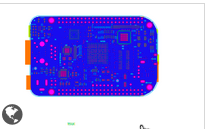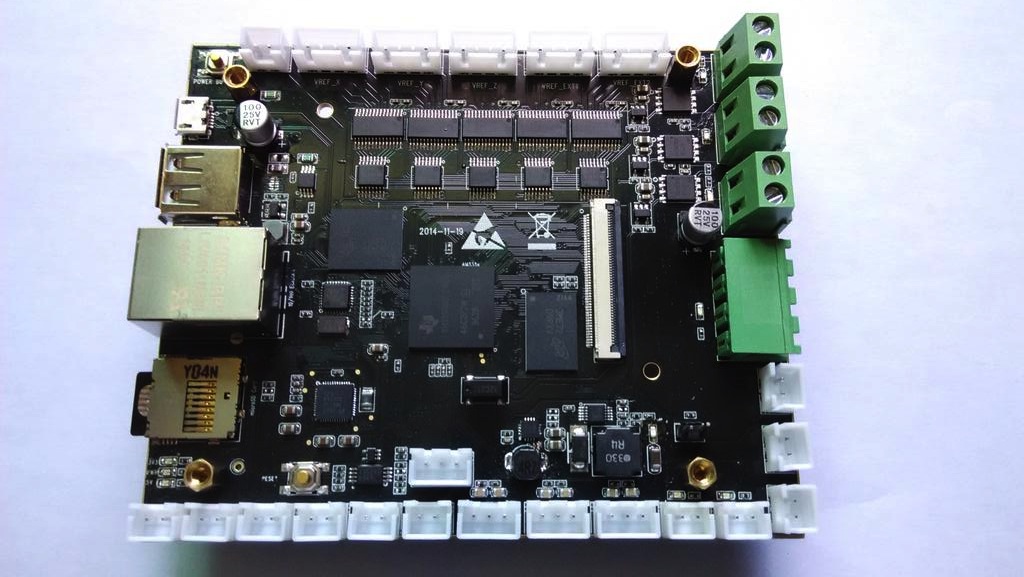by Jason Kridner
2014 has been an amazing year for BeagleBoard.org and BeagleBone Black, the most successful open hardware computer ever invented. I know what you  are thinking; “Jason, didn’t that board from the UK outsell BeagleBone Black?” Sure, but that board isn’t open hardware: there aren’t open source layout files or open source editable schematics and the components in the bill of materials aren’t readily available. With boards from BeagleBoard.org, anyone can make them, and if they make enough of them, they can be made at a similar or even lower price point. That’s only part of the beauty of open hardware.
are thinking; “Jason, didn’t that board from the UK outsell BeagleBone Black?” Sure, but that board isn’t open hardware: there aren’t open source layout files or open source editable schematics and the components in the bill of materials aren’t readily available. With boards from BeagleBoard.org, anyone can make them, and if they make enough of them, they can be made at a similar or even lower price point. That’s only part of the beauty of open hardware.
We started 2014 with a big issue: not enough BeagleBone Blacks were available for everyone that wanted one (or a thousand). All official BeagleBoard.org boards are made cost effectively in Richardson, TX by CircuitCo and they’ve been working around the clock to make more boards. They have been increasing their output, but they need solid orders and strong lead times to produce enough boards for people dropping them into volume products. Thanks to the open source nature of Beagle, clones have been out there. To improve availability, we tested one from Element14’s Embest subsidiary in China and declared it “BeagleBoard Compliant“. Now, BeagleBone Black is readily available all over the world, including Element14’s version.
BeagleBone Black’s success in 2014 was reflected in incredible launches on Kickstarter of Open qPCR, an open hardware DNA diagnostic machine, and Squink, an electronics factory for your desktop. These are some stand-out projects, but what really gave me a sense of BeagleBone Black’s success was a walk around some of the Maker Faires. It seemed everybody was using a Bone if they were looking to include a computer in their project – at least if they were building more than one. One of the most popular uses of BeagleBone Black is in lighting controllers, thanks to the high performance and ability for the Programmable Real-time Units (PRUs) ability to create custom interfaces for affordable large-scale LED panels. These could be seen from the most deadly lighting display at the exhibit, the Orbital Rendersphere from Hoboken Hackerspace, to the most active video game playing on the Megascroller from Trammell Hudson and Justin Day (based on his Trammell’s previous work on Octoscroller). Showing up in a more surprising place, when I was getting a free cup of coffee in the morning. I introduced myself as being from BeagleBoard.org and the makers of PourSteady, the automated pour-over coffee machine, proceeded to slide the case off and show me the Bone inside responsible for controlling this amazing machine. Checking out the advanced vision capabilities of the Pick ‘n Paste circuit assembly machine from Carbide Labs, it is readily apparent why people are choosing BeagleBone Black for machine controls and it won’t be too long before Bones start making themselves!
With all of the success seen in 2014, 2015 is where we’ll most certainly see the real strength of the Bone’s open hardware nature. With the BeagleBone Black design now on a free on-line design tool called Upverter, innovative sourcing, assembly and funding solutions from folks like CircuitHub.com, and a significant flattening of the prices of pin-compatible Sitara processors from Texas Instruments, help prove that 2015 will be the year of the Bone clones. This means there will be more software compatible options with application focused features, such as Truby Zong’s 3D-printer controller.

Thank you everyone who has bought, played, utilized, trained, wrote, expanded or contributed this year for making Beagle so successful in 2014. With community, capes, clones and coffee, 2015 is sure to be the year of the Beagle!

